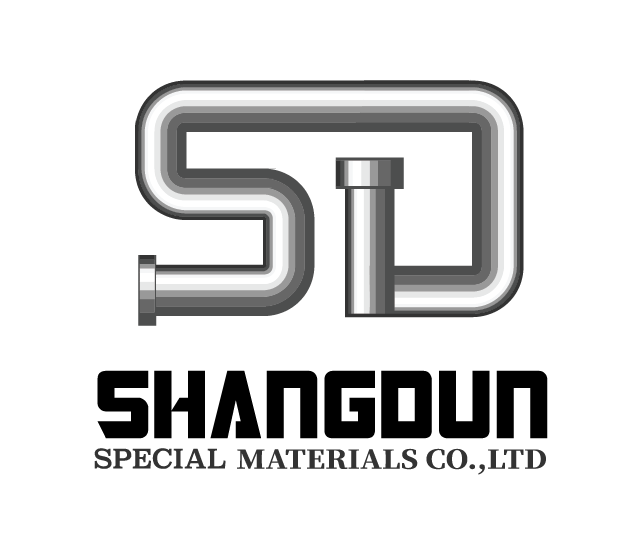In the following forms:
Pipes,tubes
Buttweld Fitting
Round,Square,flat bars,rods
Plates,Sheets,Strips
Flanges & Other kinds of forgings products
Ni-Fe-Cr UNS N08020 (Alloy 20),carpenter 20
Chemical Compostion:
| Material | Ni | Cr | Iron | Mn | C | Cu | Si max | S max | Mo | P max | Cb+Ta |
| N08020 | 32.00-38.00 | 19.00-21.00 | Remainder | 2.00 | 0.070 | 3.00-4.00 | 1.00 | 0.035 | 2.00-3.00 | 0.045 | 8xC-1.00 |
Mechanical Properties:
| Material | Tensile Strength,Min PSI (MPa) | Yield Strength (0.2% offset) Min(Mpa) | Elongation in 2 in. or 50mm or 4D,Min.,% |
| N08020 | 80000 (550) | 35000(240) | 30 |
Standards:
| Material | Seamless Tubing &/or Pipe | Welded Tubing | Welded Pipe | Buttweld fitting | Plate/Sheet/Strip | Bar Forging and Forging stock |
| N08020 | SB-729 , A312 | SB-468 | SB-464 | SB-366 | SB-463 | SB462, SB472, SB473 |
General Properties
Alloy
20 (UNS N08020) is an austenitic, nickel-iron-chromium based super
alloy with additions of Copper and Molybdenum which provide resistance
to hostile environments, pitting, and crevice corrosion. It is also
stabilized with Columbium to minimize carbide precipitation during
welding. Alloy 20 appears to fall between both the stainless and nickel
categories as it contains characteristics of both. It was designed for
maximum resistance to acid attack and demonstrates superior resistance
to stress-corrosion cracking in boiling 20% to 40% sulfuric acid, and
also has excellent general corrosion resistance to sulfuric acid and to
chloride stress corrosion cracking. Alloy 20 has good mechanical
properties at both ambient and elevated temperatures, up to
approximately
930°F (500°C) and is readily fabricated by usual industrial processes.
Specifications: UNS N08020
Applications:
Alloy 20 was originally designed for use in sulfuric acid related
applications; however, it is now frequently used in a wide variety of
industries. Applications that commonly use Alloy 20 include:
- Chemical and allied industries
- Food and dye production
- Heat exchangers
- Explosives
- Tanks
- Valves
- Pickling racks
- Manufacture of synthetic rubber and plastics
- Pharmaceuticals
- SO2 scrubbers and other severe environments
Standards:
- ASTM/ASME: UNS N08020
- EURONORM: FeMi35Cr20Cu4Mo2
- DIN: 2.4660
Corrosion Resistance:
- Excellent resistance to general corrosion, pitting, and crevice
corrosion in chemicals containing chlorides and sulfuric, phosphoric,
and nitric acids. - Nickel content aids in chloride ion stress and corrosion resistance.
- Additions of Copper and Molybdenum provide resistance to hostile environments, pitting, and crevice corrosion.
- Chromium adds to its resistance of oxidizing environments such as nitric acids.
- Columbium reduces the effects of carbide precipitation.
Weldability:
- All commonly used welding methods, with the exception of oxyacetylene, can be successfully used.
- The presence of Columbium tends to minimize the precipitation of
carbides in the heat-affected zone, so the material may be used in the
as-welded condition in most cases. - Pre-heating is not required.
Heat Treatment:
- Cannot be hardened by heat treatment.
- Stabilized-annealing is done at 1750-1850°F, followed by water quenching.
- Stress relieving can be performed on annealed material up to 950°F.
Processing – Hot Forming:
- Heat uniformly to a starting temperature of 2100-2225°F. Finish forging before the stock drops below 1800°F.
- In order to stabilize the material after hot working operations,
reheat at 1750-1850°F for a minimum of 1/2-hour per one inch of
thickness and water quench.
Processing – Cold Forming:
- Alloy 20 has good cold formability. Bending, drawing and pressing,
and other forming operations that occur in the production of fabricated
items are readily performed. - Alloy 20 can normally be press brake bent over a radius twice the materials thickness.
- After cold reductions of more than 15%, a final stabilizing annealing is often required.
Machinability:
- Because of Alloy 20′s high work-hardening rate the following are required:
- Only low surface-cutting speeds are possible compared with low-alloy standard austenitic stainless steel.
- Tools should be engaged at all times.
- Heavy feeds are important in getting below the work-hardened ‘skin’.




